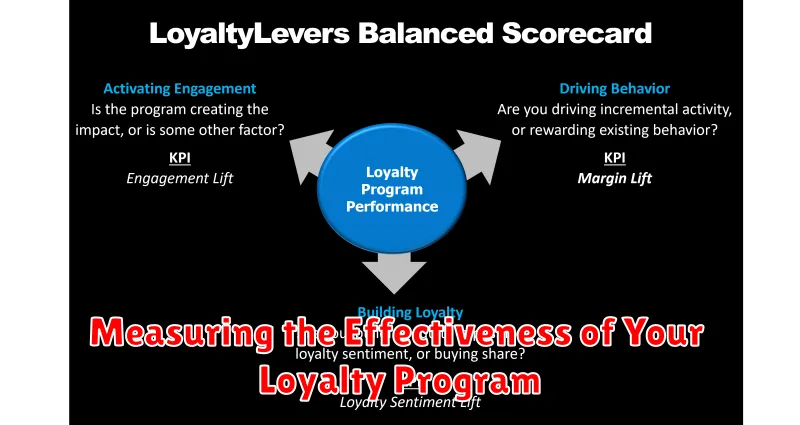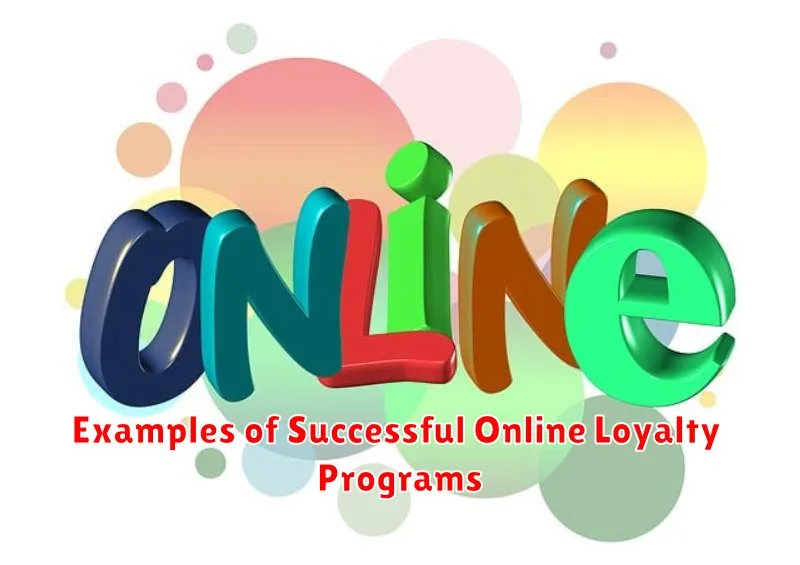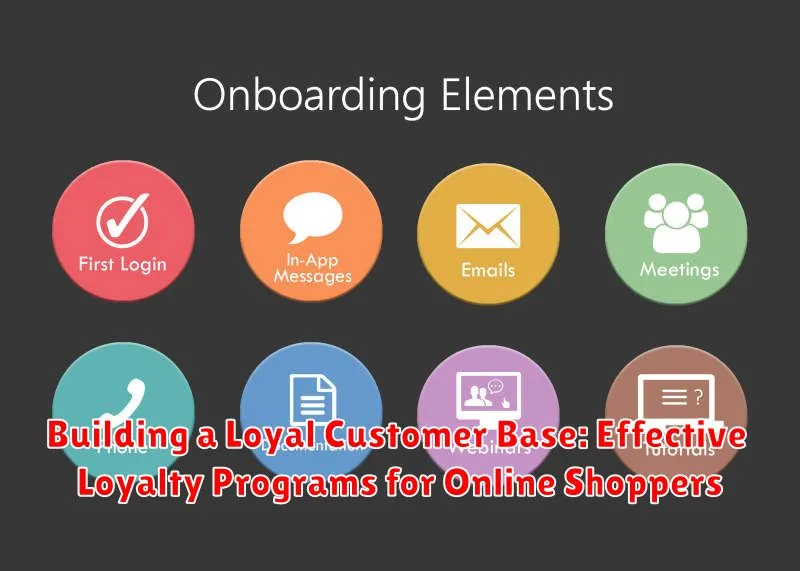In today’s competitive e-commerce landscape, cultivating a loyal customer base is paramount to sustained success. Attracting new customers is essential, but retaining existing ones through effective loyalty programs yields significant long-term benefits. This article explores the crucial role of customer loyalty in the online shopping sphere and delves into proven strategies for building robust loyalty programs for online shoppers. We will examine how these programs can not only incentivize repeat purchases but also foster enduring relationships with your brand, ultimately driving sustainable growth and profitability.
Building a loyal customer base requires a strategic approach that goes beyond simple discounts. Effective loyalty programs must offer genuine value to online shoppers, recognizing their individual preferences and purchase behaviors. This article provides practical insights and actionable steps for designing and implementing loyalty programs for online shoppers that resonate with your target audience, encouraging repeat business and fostering strong brand advocacy. We will explore various program structures, reward mechanisms, and engagement tactics, enabling you to create a customer loyalty program that strengthens your brand’s position in the competitive digital marketplace.
Understanding the Importance of Customer Loyalty
In today’s competitive online marketplace, cultivating customer loyalty is paramount to sustained success. Loyal customers are more likely to make repeat purchases, spend more over time, and act as brand advocates, organically driving new customer acquisition.
Acquiring new customers is significantly more expensive than retaining existing ones. A loyal customer base provides a stable foundation for revenue generation, allowing businesses to allocate resources more efficiently toward growth and innovation rather than constant customer acquisition campaigns.
Positive word-of-mouth referrals from loyal customers are invaluable. These genuine recommendations hold more weight than any advertising campaign, fostering trust and credibility among prospective buyers. In the digital age, online reviews and social media sharing amplify the impact of these endorsements, further highlighting the importance of customer loyalty.
Types of Loyalty Programs for Online Businesses
Several loyalty program models cater to diverse online business needs. Choosing the right one depends on your specific goals and target audience. Here are some popular options:
Points-Based Programs
These programs reward customers with points for every purchase, which can later be redeemed for discounts, free products, or other perks. Flexibility and simplicity make points-based programs a popular choice.
Tiered Programs
Tiered programs offer increasing benefits as customers spend more. This structure encourages higher spending and fosters a sense of exclusivity for top-tier members. Different tiers unlock various rewards, from free shipping to personalized service.
Paid/VIP Programs
Customers pay an upfront fee to join a VIP program, receiving benefits like free shipping, exclusive discounts, and early access to sales. These programs generate immediate revenue and cater to highly engaged customers.
Value-Based Programs
Value-based programs focus on aligning with customer values. This might involve donating a portion of sales to a charity or offering rewards related to sustainable practices. These programs appeal to customers driven by social impact.
Game-Based Programs
Introducing game mechanics like spin-to-win wheels, progress bars, and badges can add an element of fun and encourage repeat purchases. This approach fosters a sense of engagement and adds a unique element to the shopping experience.
Designing a Successful Loyalty Program
A well-designed loyalty program is crucial for maximizing customer engagement and retention. Simplicity is key. A complicated program can deter customers. Clearly outline the program’s mechanics, rewards, and redemption process.
Tiered programs can be highly effective. They offer increasing benefits as customers progress, encouraging higher spending and deeper engagement. Consider offering exclusive perks, early access to sales, or personalized recommendations for higher tiers.
Reward structure must be compelling. Points, discounts, free shipping, or exclusive access to products are all viable options. Ensure the rewards align with your target audience’s preferences. Regularly evaluate and adjust your rewards to maintain their appeal.
Branding is also important. Give your program a memorable name and create visually appealing marketing materials. This helps reinforce brand recognition and creates a sense of exclusivity for members.
Strategies for Encouraging Customer Participation
Driving engagement in your loyalty program requires a multi-faceted approach. Promote the program benefits clearly across all customer touchpoints, from your website and social media to email marketing and order confirmations. Simplicity is key; a complicated enrollment process can deter participation. Offer a variety of earning and redemption options to cater to different customer preferences. Consider incorporating gamification, such as tiered rewards, badges, or progress bars, to make the experience more interactive and engaging.
Exclusive perks for members, beyond standard discounts, can significantly boost participation. Early access to sales, free shipping, birthday rewards, and personalized recommendations can make customers feel valued. Don’t underestimate the power of community building. Create a space, like a dedicated online forum, where members can connect and share their experiences. Finally, actively solicit customer feedback on the program. This shows you value their input and allows you to continuously refine the program to better meet their needs.
Measuring the Effectiveness of Your Loyalty Program

Analyzing the performance of your loyalty program is crucial for optimizing its impact and return on investment. Key metrics provide valuable insights into customer behavior and program effectiveness.
Customer Retention Rate: Track the percentage of customers who continue to purchase after joining the loyalty program. A higher retention rate indicates the program’s success in fostering loyalty.
Customer Lifetime Value (CLTV): Measure the total revenue generated by a customer over their relationship with your business. Compare the CLTV of loyalty program members to non-members to assess the program’s impact on long-term profitability.
Redemption Rate: Monitor the frequency with which customers redeem their rewards. This metric helps gauge the attractiveness and perceived value of the rewards offered.
Program Growth Rate: Observe the rate at which new customers are enrolling in the loyalty program. Consistent growth signals a healthy and engaging program.
By regularly monitoring these key performance indicators (KPIs), you can identify areas for improvement and ensure your loyalty program continues to drive customer engagement and business growth. Regular review and adjustments are essential for a successful loyalty program.
Best Practices for Loyalty Program Management
Effective loyalty program management hinges on understanding customer behavior and preferences. Data analysis is crucial for identifying purchasing patterns and tailoring rewards accordingly. This allows businesses to personalize the customer experience and offer relevant incentives.
Clear communication is essential. Program rules, reward redemption processes, and any updates should be easily accessible and understandable. Transparency builds trust and encourages active participation.
Regularly evaluate and iterate on the program. Track key metrics such as customer retention rate, redemption rates, and program ROI. Use this data to refine the program structure, rewards, and communication strategies, ensuring it remains engaging and valuable for customers.
Tiered programs can foster a sense of exclusivity and encourage higher spending. Offering increasing benefits at different tiers motivates customers to progress and remain engaged.
Finally, ensure seamless integration of the loyalty program with the overall online shopping experience. A complicated or clunky user experience can deter participation and negate the program’s benefits.
Examples of Successful Online Loyalty Programs

Examining successful programs provides valuable insights for building your own. Sephora’s Beauty Insider program is a prime example. It offers tiered rewards, exclusive experiences, and personalized recommendations, fostering a strong sense of community among beauty enthusiasts.
Amazon Prime, while not solely a loyalty program, demonstrates the power of bundled benefits. Free shipping, streaming services, and exclusive deals create immense value for members, driving consistent engagement and repeat purchases.
Starbucks Rewards seamlessly integrates mobile technology. Customers easily accumulate “stars” through purchases, redeemable for drinks and food. The app’s user-friendly interface and personalized offers enhance the customer experience.

